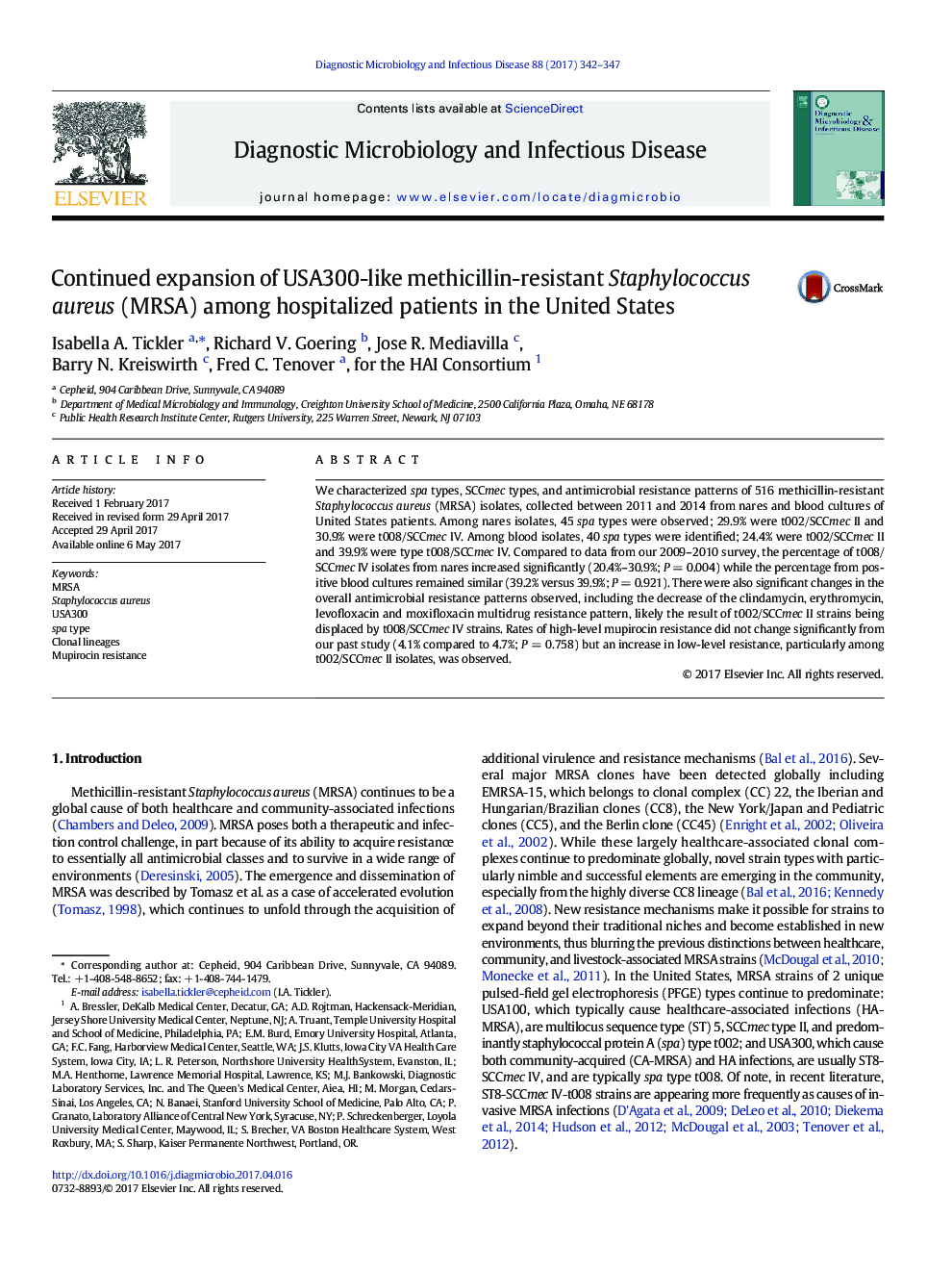| Article ID | Journal | Published Year | Pages | File Type |
|---|---|---|---|---|
| 5665895 | Diagnostic Microbiology and Infectious Disease | 2017 | 6 Pages |
â¢USA300-like MRSA strains continue to displace USA100-like MRSA in the United States.â¢This clonal shift is reflected by changes in antimicrobial resistance patterns.â¢An increase in low-level mupirocin resistance in USA100 isolates was noted.
We characterized spa types, SCCmec types, and antimicrobial resistance patterns of 516 methicillin-resistant Staphylococcus aureus (MRSA) isolates, collected between 2011 and 2014 from nares and blood cultures of United States patients. Among nares isolates, 45 spa types were observed; 29.9% were t002/SCCmec II and 30.9% were t008/SCCmec IV. Among blood isolates, 40 spa types were identified; 24.4% were t002/SCCmec II and 39.9% were type t008/SCCmec IV. Compared to data from our 2009-2010 survey, the percentage of t008/SCCmec IV isolates from nares increased significantly (20.4%-30.9%; PÂ =Â 0.004) while the percentage from positive blood cultures remained similar (39.2% versus 39.9%; PÂ =Â 0.921). There were also significant changes in the overall antimicrobial resistance patterns observed, including the decrease of the clindamycin, erythromycin, levofloxacin and moxifloxacin multidrug resistance pattern, likely the result of t002/SCCmec II strains being displaced by t008/SCCmec IV strains. Rates of high-level mupirocin resistance did not change significantly from our past study (4.1% compared to 4.7%; PÂ =Â 0.758) but an increase in low-level resistance, particularly among t002/SCCmec II isolates, was observed.
